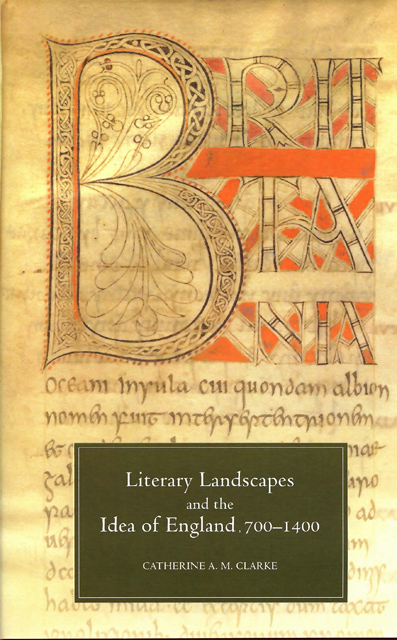Book contents
- Frontmatter
- Dedication
- Contents
- Acknowledgements
- Abbreviations
- Introduction
- Chapter One The Edenic Island
- Chapter Two Re-making the locus amoenus in Anglo-Saxon England
- Chapter Three Local Landscapes as Mirrors for England
- Chapter Four The Delightful City
- Epilogue: Disruptions and Continuities
- Bibliography
- Index
Chapter Four - The Delightful City
Published online by Cambridge University Press: 28 February 2024
- Frontmatter
- Dedication
- Contents
- Acknowledgements
- Abbreviations
- Introduction
- Chapter One The Edenic Island
- Chapter Two Re-making the locus amoenus in Anglo-Saxon England
- Chapter Three Local Landscapes as Mirrors for England
- Chapter Four The Delightful City
- Epilogue: Disruptions and Continuities
- Bibliography
- Index
Summary
The ‘absent city’ of later medieval English literature is now a critical commonplace. In his well-known study on Chaucer, David Wallace argues that
There is no idea of a city for all the inhabitants of London to pay allegiance to; there are only conflicts of associational, hierarchical, and anti-associational discourses, acted out within or across the boundaries of a city wall or the fragments of a text called The Canterbury Tales.
The city is a key symbolic space or landscape in medieval English literary tradition, its walled structure forming an equivalent to the order, beauty and symbolism of the enclosed pastoral locus amoenus. Yet the imaginative ideal does not always map easily onto representations of real medieval cities. This chapter will focus on Anglo-Latin writing about English cities – not only London – in the later medieval period. It will concentrate in particular on two periods in which the city becomes a central literary concern: the celebration of emergent cities through formal urban encomium in the late twelfth century, and the more problematic negotiations or evasions of the city in late fourteenth-century texts. The twelfth-century texts selected for close study are William Fitz Stephen's description of London, and a lesser-known Anglo-Latin work in praise of Chester (Luciani de Laude Cestrie). These texts participate confidently in the tradition of urban encomium, and are heavily influenced by literary pastoral conventions. They celebrate the English city as locus amoenus, a delightful place invested with symbolism and the inheritor of classical and spiritual traditions and ideals. These texts seem to demonstrate a confidence and optimism about the capacity of the city to signify, to be read as a coherent meaningful and symbolic space. The late fourteenth-century texts which will be examined in detail in this chapter are John Gower's Vox Clamantis (Book I in particular), as well as Richard Maidstone’s Concordia facta inter regem et cives Londonie, and a short Anglo-Latin poem from a Glastonbury manuscript, editorially titled The Stores of the Cities. In these later texts, the potential symbolism or meaning of the city space is presented as multiplicitous, ambivalent and contested. The conventions of urban encomium and the literary locus amoenus continue to be used, but with an acute awareness of rhetorical performance and representation. Ultimately, in The Stores of the Cities, the literary city unravels into an unstructured cacophony of aural fragments.
- Type
- Chapter
- Information
- Literary Landscapes and the Idea of England, 700–1400 , pp. 90 - 129Publisher: Boydell & BrewerPrint publication year: 2006

